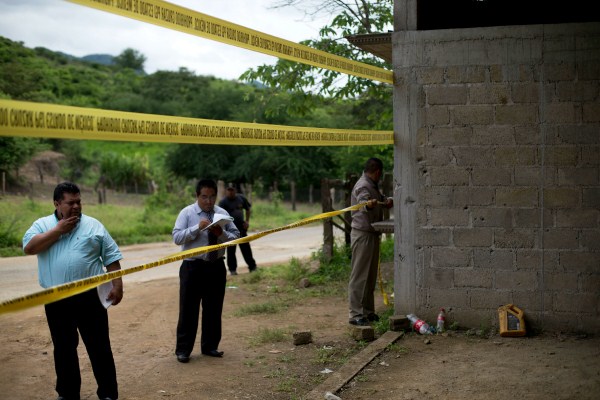The story out of San Pedro Limon keeps changing. First, Mexican soldiers had killed 22 gang members in a late June shootout in a warehouse in the rural town some 95 miles southwest of Mexico City, according to the army’s official account. Then the Associated Press sent reporters to San Pedro Limon, where they found evidence not of a shootout but a massacre. A witness said that all but one of the gang members had actually surrendered before they were executed. Months passed before an official government investigation in mid-September, after which the Mexican Defense Department arrested an army officer and seven of the soldiers. Days later, Mexico’s attorney general announced that three soldiers—all privates—were being charged with homicide.
But that doesn’t settle it: Questions linger over the government’s probe. On Oct. 7, Mexican authorities announced that homicide charges had not yet been filed. Then the government revised its version of events yet again. There were two gun battles in San Pedro Limon, Attorney General Jesus Murillo Karam said, that left the majority of the suspects either wounded or dead. The three soldiers charged with homicide had entered the warehouse and killed “those who were still alive.” A military court will prosecute seven soldiers and a lieutenant for dereliction of duty.
The deaths, and the uncertainty still surrounding them, once again raise questions of accountability for Mexico’s army and security forces over the use of force in their long fight against drug cartels and gangs. And the controversy has quickly shifted attention from President Enrique Pena Nieto’s touted economic reforms back to fundamental doubts about the rule of law in Mexico and how alleged military abuses involving civilian victims are dealt with in the courts.

